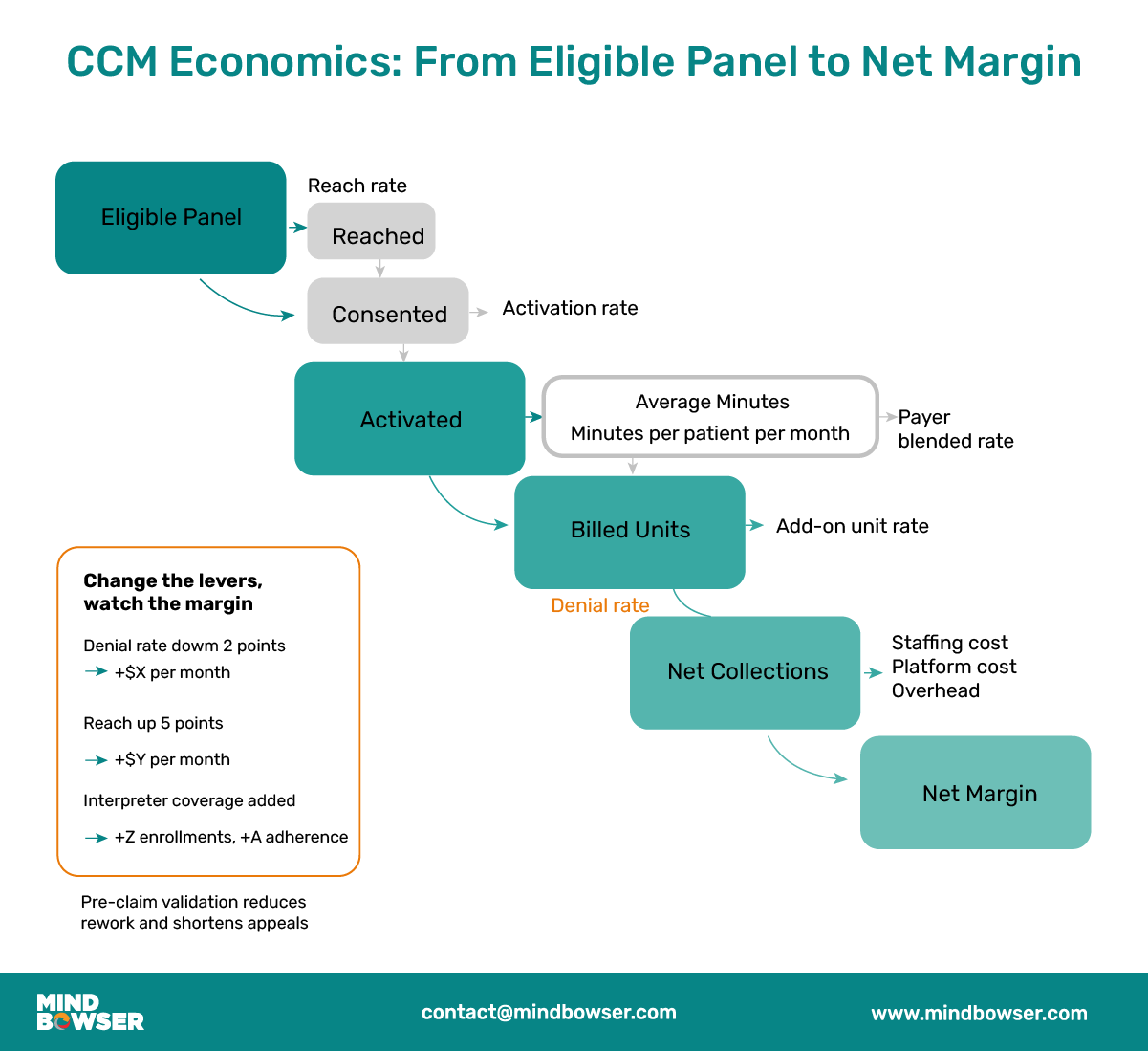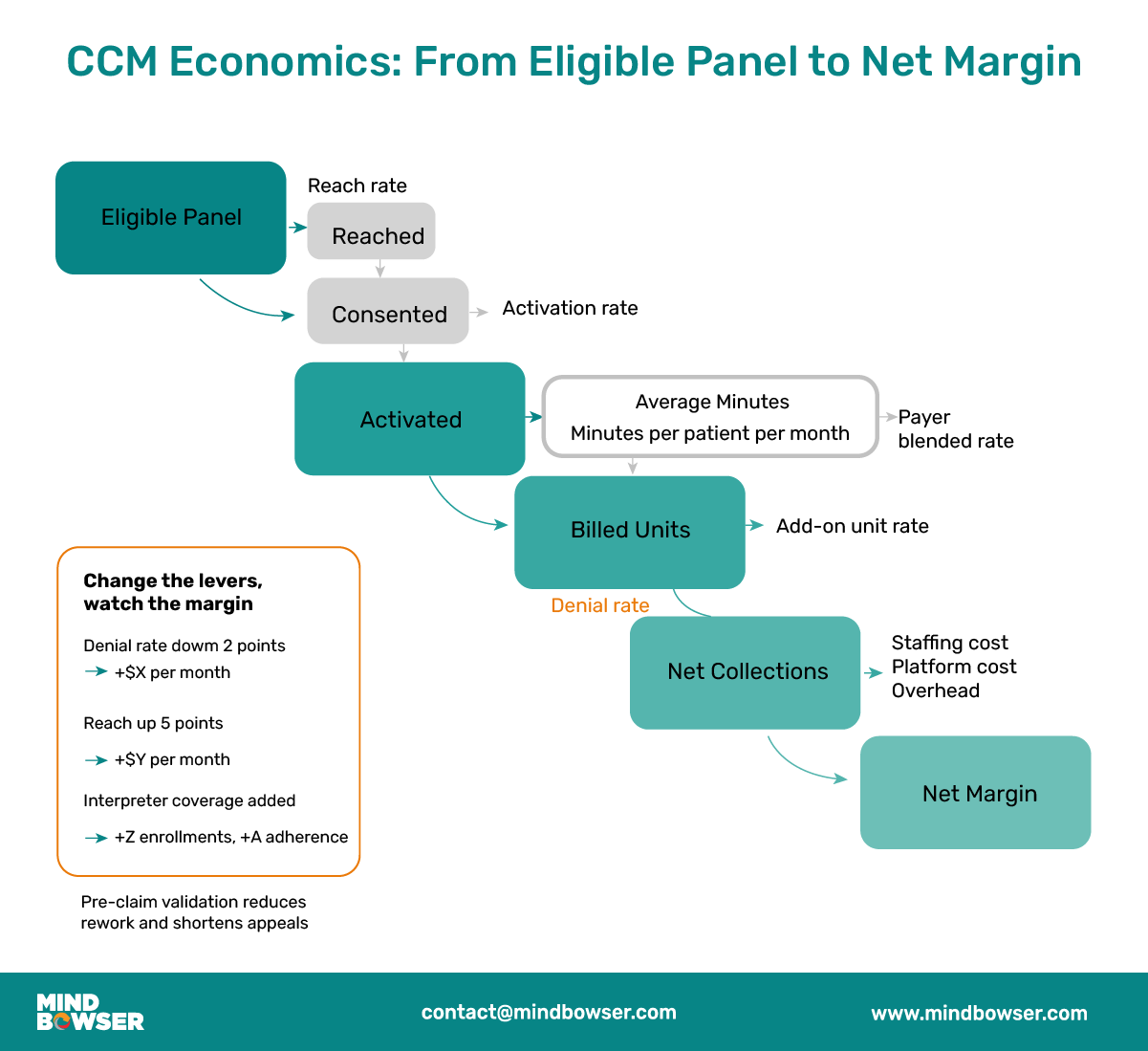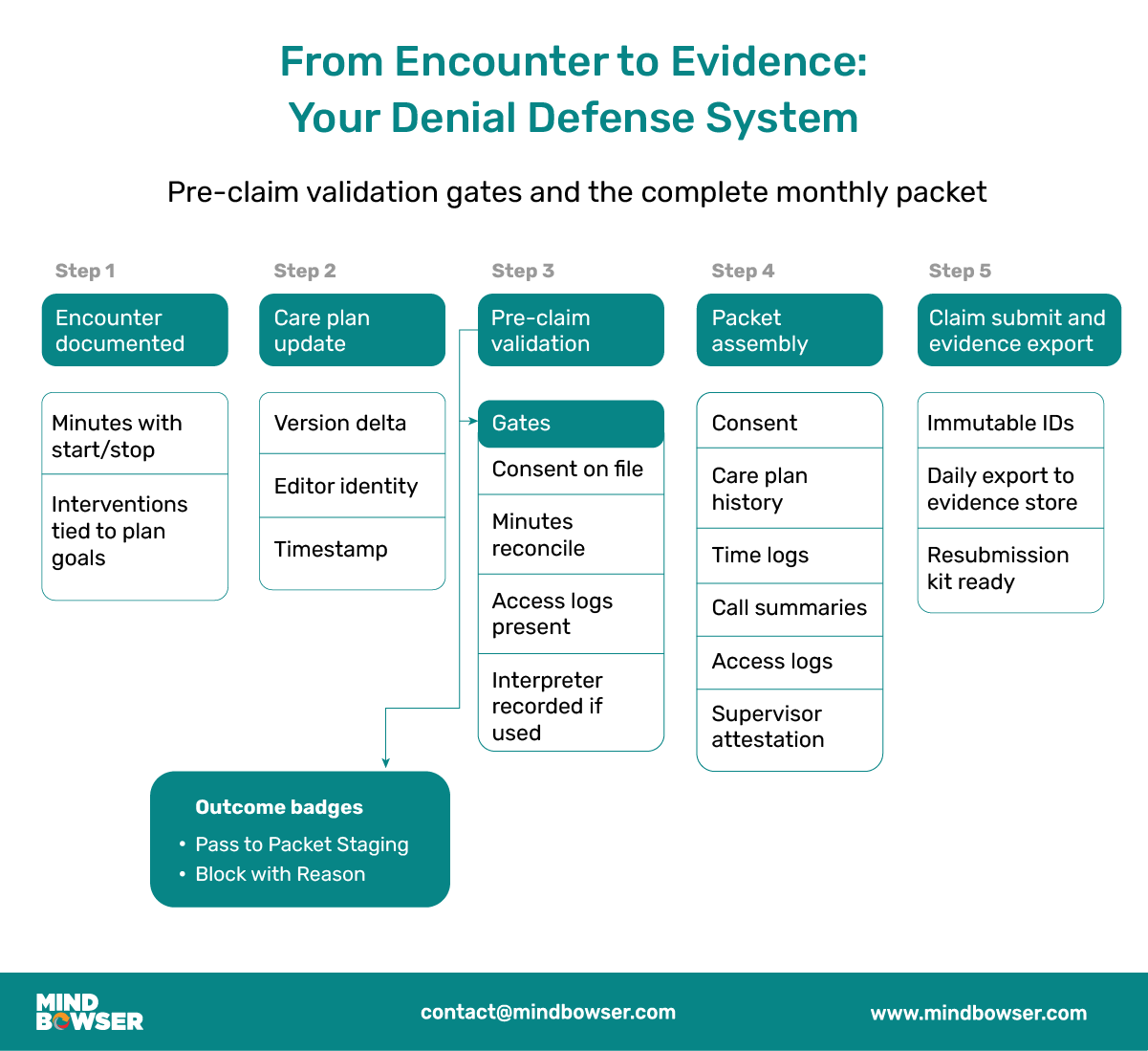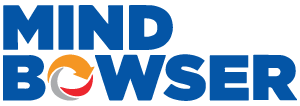Chronic care management companies help hospitals and digital health teams close care gaps between visits, capture compliant revenue, and protect against denials with strong documentation and integration. The best partners combine EHR interoperability, measurable outcomes, and audit-proof workflows aligned with current CMS rules. See the checklist and case studies before you choose.
Hospitals and health systems face a stubborn gap between patient need and care team capacity. More than 60% of adults in the U.S. live with at least one chronic condition, and two-thirds of Medicare beneficiaries have multiple illnesses. Yet EHR workflows remain fragmented, documentation is often inconsistent, and staff turnover disrupts continuity. At the same time, value-based contracts are accelerating, demanding predictable ROI and measurable outcomes. This leaves provider organizations exposed: higher audit risk, strained compliance teams, and inconsistent patient engagement.
The expectations of hospitals and digital health leaders are shifting. Interoperability is non-negotiable. Organizations want vendors that can write back to Epic, Cerner, Meditech, and Athena without manual workarounds. They expect measurable improvements in revenue capture, quality scores, and readmission rates. And they want partners that offer built-in audit protection—pre-claim validation, structured documentation packets, and compliance artifacts that withstand payer scrutiny. Governance is now a top criterion, not a footnote.
This playbook is designed to give executives a clear framework. First, it maps the vendor landscape by tiers, operating models, and use cases. Second, it unpacks the strengths and tradeoffs of leading players like ChartSpan, Signallamp, and CareHarmony. Third, it highlights the persistent gaps no company fully solves: interoperability, safe automation, and patient engagement at scale. Finally, it provides a decision checklist, case studies, and an implementation timeline to lower audit risk and protect margins.

Strengths
Tradeoffs to check
Best fit scenarios
Red flags to watch
Strengths
Tradeoffs to check
Best fit scenarios
Red flags to watch
Strengths
Tradeoffs to check
Best fit scenarios
Red flags to watch
Strengths
Tradeoffs to check
Best fit scenarios
Red flags to watch
Onboarding speed and documentation controls
Interop breadth and SMART on FHIR readiness
Staffing model, supervision, and quality measures
How to act on this section
How to act on these gaps
Acceptance criteria for buy
Prerequisites for build
Architecture checklist for hybrid
Simple monthly model
Sensitivity analysis to run
Decision quick test

Quick test
Provide three denial scenarios and ask the vendor to assemble a complete packet of de-identified data while you observe the steps.
Quick test
Run a live write-back demo in your EHR. Change a care plan goal and verify the update, version history, and audit log in both systems.
Quick test
Shadow a shift. Review five random encounters and confirm that time, interventions, and care plan references are consistent.
Quick test
Introduce a conflicting data scenario and observe whether the system flags it, routes it, and documents the resolution.
Quick test
Request a pro forma using your data. Change the denial rate and reach by small increments, and see if the model responds as expected.
Quick test
Negotiate an exit drill clause. In month six, the vendor must perform a timed export of all encounter artifacts and prove completeness.
How to use this checklist
Starting point
High readmissions and fragmented handoffs between medical and social services. Care plans lived in different systems. Audit packets took weeks to assemble and varied by clinic.
What changed
Results that matter
Denial defense impact
Pre-claim validation blocked submissions without consent or time reconciliation. Packet quality improved, and leaders gained confidence in resubmissions when denials occurred.
Starting point
Clinicians spent too much time piecing together vitals, labs, and device feeds. Follow-ups lagged. Documentation quality varied, which raised denial risk.
What changed
Results that matter
Denial defense impact
Time logs are tied to specific interventions and plan goals. Supervisory attestations were uniform. When payers asked for proof, packets were ready the same day.
Starting point
Frequent emergency visits and low adherence. Consent and language coverage were inconsistent across sites.
What changed
Results that matter
Denial defense impact
Each claim included consent event IDs, interpreter usage, and care plan adjustments linked to SDOH findings. This strengthened the medical necessity arguments.
Starting point
Growing elderly panel with device data in silos. Administrators spent hours compiling reports. Audit readiness depended on manual exports.
What changed
Results that matter
Denial defense impact
Packets contained complete encounter histories. Time and tasks were reconciled before billing. Resubmissions included line item evidence, which shortened appeal cycles.
Program charter and roles
Contracts and safeguards
Cohort and payer mix
EHR and data mapping
Pre-claim validation and audit packet template
Training and scripts
Exit criteria for week two
Pilot activation
Day in the life workflows
EHR proof points
KPI baselines by the end of week four
Quality assurance
Exit criteria for week six

Scale to additional sites
Automation tuning
Audit packet drill
Payer engagement
Denial prevention and appeals
Training at scale
Financial tracking and go or grow review
Exit criteria for week twelve
Standing meetings
Dashboard that leaders use
Controls and change management
Pre-claim validation matrix
Resubmission packet checklist
Tabletop drill script
What you get
Accelerators that shorten time to value
Why does it help your denial defense
Deep integration instead of swivel chairing
Controls that matter in audits
Operational tools that feed contract math
What does that mean for finance
Built-in safeguards
Pre-claim validation, you can trust
Reach more patients and keep them enrolled.
What changes on the ground

The partner you select will set the tone for documentation quality, denial rates, and patient engagement. A strong fit improves compliance, reduces rework, and turns eligible panels into predictable revenue while protecting contract performance.
Run acceptance tests inside your EHR, demand packet samples, and execute a denial drill before contracts are signed. Treat audit readiness as a daily operation, not a once-a-year event.
Owning your data plane, event streams, and write-back keeps you resilient through EHR upgrades, payer changes, and staffing shifts. Interchangeable components let you add capacity without losing control.
If you want a practical map to launch and defend denials, book a working session and we will walk your team through a live write-back, daily artifact export, and a timed audit packet build on your data.
Most provide enrollment, monthly outreach, documentation, and billing support, plus reporting. Keep strategy, data ownership, supervision rules, and quality governance in-house. Use vendors for scalable capacity, multilingual outreach, and repeatable packet assembly. The balance that works best is your team as the clinical owner, with vendors supplying throughput and audit-proof evidence.
Ask for live read and write to medications, problems, care plans, tasks, and time entries. Require version history and immutable audit logs. Insist on discrete data rather than PDF uploads. Before going live, run a change control test that simulates an EHR upgrade to confirm mappings, rollback procedures, and monitoring, ensuring documentation never falls out of sync.
Build a model that ties touches to revenue and outcomes. Track reach, consent, activation, minutes per patient, add-on units, denial rate, and net collections. At the contract level, attribute CCM to readmission reductions, avoidable ED visits, and quality measure lift. Review monthly, adjust panel size and staffing, and publish a twelve-month forecast with sensitivity tests.
Small clinics often benefit from turnkey staffing to stabilize operations. Mid-sized systems prefer a co-managed model, where nurses work within existing workflows and physicians retain supervision. Large systems combine in-house teams with overflow capacity. Whatever the size, define escalation rules, language access, coverage hours, and QA sampling to prevent documentation drift.
Confirm support for language access, digital consent, interpreter documentation, and SDOH referrals with closed-loop tracking. Pricing should include interpreter time. Vendors must adapt their outreach cadences, packet templates, and billing specifics according to each plan. Require a payer playbook, denial code library, and a resubmission kit that reflect state-level nuances and timelines.

We worked with Mindbowser on a design sprint, and their team did an awesome job. They really helped us shape the look and feel of our web app and gave us a clean, thoughtful design that our build team could...


The team at Mindbowser was highly professional, patient, and collaborative throughout our engagement. They struck the right balance between offering guidance and taking direction, which made the development process smooth. Although our project wasn’t related to healthcare, we clearly benefited...

Founder, Texas Ranch Security

Mindbowser played a crucial role in helping us bring everything together into a unified, cohesive product. Their commitment to industry-standard coding practices made an enormous difference, allowing developers to seamlessly transition in and out of the project without any confusion....

CEO, MarketsAI

I'm thrilled to be partnering with Mindbowser on our journey with TravelRite. The collaboration has been exceptional, and I’m truly grateful for the dedication and expertise the team has brought to the development process. Their commitment to our mission is...

Founder & CEO, TravelRite

The Mindbowser team's professionalism consistently impressed me. Their commitment to quality shone through in every aspect of the project. They truly went the extra mile, ensuring they understood our needs perfectly and were always willing to invest the time to...

CTO, New Day Therapeutics

I collaborated with Mindbowser for several years on a complex SaaS platform project. They took over a partially completed project and successfully transformed it into a fully functional and robust platform. Throughout the entire process, the quality of their work...

President, E.B. Carlson

Mindbowser and team are professional, talented and very responsive. They got us through a challenging situation with our IOT product successfully. They will be our go to dev team going forward.

Founder, Cascada

Amazing team to work with. Very responsive and very skilled in both front and backend engineering. Looking forward to our next project together.

Co-Founder, Emerge

The team is great to work with. Very professional, on task, and efficient.

Founder, PeriopMD

I can not express enough how pleased we are with the whole team. From the first call and meeting, they took our vision and ran with it. Communication was easy and everyone was flexible to our schedule. I’m excited to...

Founder, Seeke

We had very close go live timeline and Mindbowser team got us live a month before.

CEO, BuyNow WorldWide

Mindbowser brought in a team of skilled developers who were easy to work with and deeply committed to the project. If you're looking for reliable, high-quality development support, I’d absolutely recommend them.

Founder, Teach Reach

Mindbowser built both iOS and Android apps for Mindworks, that have stood the test of time. 5 years later they still function quite beautifully. Their team always met their objectives and I'm very happy with the end result. Thank you!

Founder, Mindworks

Mindbowser has delivered a much better quality product than our previous tech vendors. Our product is stable and passed Well Architected Framework Review from AWS.

CEO, PurpleAnt

I am happy to share that we got USD 10k in cloud credits courtesy of our friends at Mindbowser. Thank you Pravin and Ayush, this means a lot to us.

CTO, Shortlist

Mindbowser is one of the reasons that our app is successful. These guys have been a great team.

Founder & CEO, MangoMirror

Kudos for all your hard work and diligence on the Telehealth platform project. You made it possible.

CEO, ThriveHealth

Mindbowser helped us build an awesome iOS app to bring balance to people’s lives.

CEO, SMILINGMIND

They were a very responsive team! Extremely easy to communicate and work with!

Founder & CEO, TotTech

We’ve had very little-to-no hiccups at all—it’s been a really pleasurable experience.

Co-Founder, TEAM8s

Mindbowser was very helpful with explaining the development process and started quickly on the project.

Executive Director of Product Development, Innovation Lab

The greatest benefit we got from Mindbowser is the expertise. Their team has developed apps in all different industries with all types of social proofs.

Co-Founder, Vesica

Mindbowser is professional, efficient and thorough.

Consultant, XPRIZE

Very committed, they create beautiful apps and are very benevolent. They have brilliant Ideas.

Founder, S.T.A.R.S of Wellness

Mindbowser was great; they listened to us a lot and helped us hone in on the actual idea of the app. They had put together fantastic wireframes for us.

Co-Founder, Flat Earth

Mindbowser was incredibly responsive and understood exactly what I needed. They matched me with the perfect team member who not only grasped my vision but executed it flawlessly. The entire experience felt collaborative, efficient, and truly aligned with my goals.

Founder, Child Life On Call

The team from Mindbowser stayed on task, asked the right questions, and completed the required tasks in a timely fashion! Strong work team!

CEO, SDOH2Health LLC

Mindbowser was easy to work with and hit the ground running, immediately feeling like part of our team.

CEO, Stealth Startup

Mindbowser was an excellent partner in developing my fitness app. They were patient, attentive, & understood my business needs. The end product exceeded my expectations. Thrilled to share it globally.

Owner, Phalanx

Mindbowser's expertise in tech, process & mobile development made them our choice for our app. The team was dedicated to the process & delivered high-quality features on time. They also gave valuable industry advice. Highly recommend them for app development...

Co-Founder, Fox&Fork
